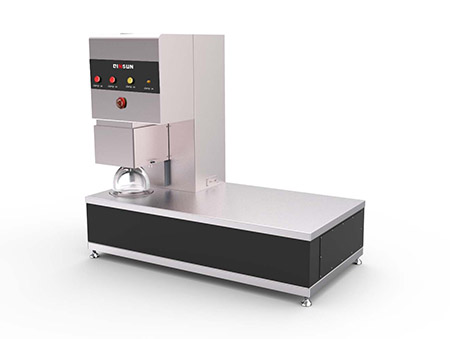- Qinsun Instruments Co., Ltd.
- Tell:+86-21-6780 0179
- Phone:+86-17740808215
- Address:No. 2578 Minhang District Gu Dai Road, Shanghai
- Contact:Mr. Li
- QQ:846490659
What is ASTM D3786 bursting strength?

ASTM D3786 is a standard test method developed by ASTM International that evaluates the bursting strength of textiles. Bursting strength refers to the ability of a fabric or textile material to resist rupture or bursting when subjected to a specific amount of pressure. This test method determines the bursting strength of woven, knitted, or nonwoven fabrics, as well as other textile materials.
The ASTM D3786 test method involves the use of a hydraulic or pneumatic bursting tester, also known as a bursting strength tester or a diaphragm-based instrument. Here's an overview of the ASTM D3786 bursting strength test:

1. Test Apparatus:
- Bursting Tester: The test equipment consists of a circular clamping ring or a clamp that can hold the specimen securely. The force is applied to the specimen by a diaphragm or ball that expands hydraulically or pneumatically. The instrument records the maximum pressure or force exerted on the specimen at the point of rupture.
2. Test Procedure:
- Sample Preparation: Test specimens are prepared by cutting specific-sized circular samples from the textile material using a cutting die or template. The size of the sample is specified in the test standard, typically ranging from 38 mm (1.5 inches) to 152 mm (6 inches) in diameter, depending on the type of material.
- Conditioning: The specimens are conditioned at standard atmospheric conditions (temperature and humidity) for a specified period to eliminate any moisture or other factors that may affect the test results. Conditioning typically involves placing the samples in a controlled environment, such as a conditioning chamber, for 24 hours before testing.
- Testing: The conditioned specimen is placed between the clamping rings or clamps of the bursting tester. The diaphragm or ball is centrally aligned with the specimen and inflated gradually, applying hydrostatic pressure or air pressure until the specimen bursts. The bursting pressure or force is recorded by the instrument and used to determine the bursting strength of the material.
3. Calculation and Reporting:
- Bursting Strength: The bursting strength is calculated by dividing the maximum pressure or force recorded by the instrument during the test by the surface area of the specimen. The bursting strength is expressed in units of either kilopascals (kPa) or pounds per square inch (psi).
- Test Results: The test results, including the bursting strength values for each specimen, are reported. In some cases, the average bursting strength value based on multiple samples may also be reported.
It's important to note that the ASTM D3786 bursting strength test method provides a quantitative measure of the resistance of textile materials to bursting under specific conditions. The test results help assess the suitability of the material for various applications where bursting strength is critical, such as fabric for upholstery, luggage, and industrial applications.
Additionally, it's essential to use standardized testing procedures and maintain appropriate testing conditions to ensure accurate and comparable results. Compliance with ASTM D3786 provides a reliable benchmark for evaluating the bursting strength of textiles and assists manufacturers, designers, and buyers in selecting materials that meet specific performance requirements.
In summary, ASTM D3786 is a test method that evaluates the bursting strength of textiles. It involves applying pressure to a conditioned specimen using a bursting tester and measuring the maximum pressure or force exerted on the material at the point of rupture. The results help determine the material's ability to resist bursting and ensure its suitability for various applications.





